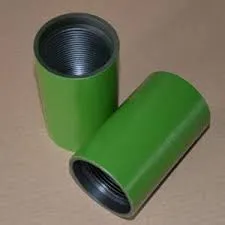- Afrikaans
- Albanian
- Amharic
- Arabic
- Armenian
- Azerbaijani
- Basque
- Belarusian
- Bengali
- Bosnian
- Bulgarian
- Catalan
- Cebuano
- Corsican
- Croatian
- Czech
- Danish
- Dutch
- English
- Esperanto
- Estonian
- Finnish
- French
- Frisian
- Galician
- Georgian
- German
- Greek
- Gujarati
- Haitian Creole
- hausa
- hawaiian
- Hebrew
- Hindi
- Miao
- Hungarian
- Icelandic
- igbo
- Indonesian
- irish
- Italian
- Japanese
- Javanese
- Kannada
- kazakh
- Khmer
- Rwandese
- Korean
- Kurdish
- Kyrgyz
- Lao
- Latin
- Latvian
- Lithuanian
- Luxembourgish
- Macedonian
- Malgashi
- Malay
- Malayalam
- Maltese
- Maori
- Marathi
- Mongolian
- Myanmar
- Nepali
- Norwegian
- Norwegian
- Occitan
- Pashto
- Persian
- Polish
- Portuguese
- Punjabi
- Romanian
- Russian
- Samoan
- Scottish Gaelic
- Serbian
- Sesotho
- Shona
- Sindhi
- Sinhala
- Slovak
- Slovenian
- Somali
- Spanish
- Sundanese
- Swahili
- Swedish
- Tagalog
- Tajik
- Tamil
- Tatar
- Telugu
- Thai
- Turkish
- Turkmen
- Ukrainian
- Urdu
- Uighur
- Uzbek
- Vietnamese
- Welsh
- Bantu
- Yiddish
- Yoruba
- Zulu
Coupling Tube Connector for Secure and Efficient Fluid Transfer Solutions
Understanding Coupling Tube Fittings Applications, Types, and Advantages
In modern industrial applications, the efficiency and safety of fluid transfer systems heavily rely on the components they employ. Among the most critical components are coupling tube fittings. These fittings serve as essential connectors that facilitate the joining of pipes or tubes in various systems. This article delves into the significance, applications, types, and advantages of coupling tube fittings.
What are Coupling Tube Fittings?
Coupling tube fittings are specialized connectors designed for tubes and pipes, enabling fluid transfer within a system. They are essential in many industries, including hydraulics, pneumatics, and water supply systems. Coupling fittings are distinct for their ability to secure and isolate connections with minimal leakage, thus ensuring efficient operation.
Applications of Coupling Tube Fittings
Coupling tube fittings are widely utilized across various sectors
1. Hydraulics In hydraulic systems, coupling tube fittings connect hoses and tubes to transfer hydraulic fluids. Their design accommodates high-pressure conditions, making them vital in machinery and construction equipment.
2. Pneumatics In pneumatic systems, which rely on compressed air, these fittings connect pipes for efficient air transfer. They help maintain the flow of air, thereby ensuring the smooth functioning of various machines.
3. Oil and Gas In the oil and gas industry, coupling fittings are crucial for transporting oils, gases, and other petrochemicals. Their ability to withstand extreme pressures makes them suitable for demanding applications.
4. Water Supply and Plumbing Coupling tube fittings are commonly employed in plumbing systems to connect water pipes. They help prevent leaks and ensure a steady flow of water in residential and commercial buildings.
5. Medical Devices In the medical field, these fittings are used in devices that require sterile and reliable fluid transfer, underscoring their importance in patient care and medical procedures.
Types of Coupling Tube Fittings
Several types of coupling tube fittings cater to specific needs, each designed for various applications
1. Compression Fittings These fittings utilize a compression ring to create a tight seal around the tube or pipe. They are simple to install and remove, making them ideal for applications requiring regular maintenance.
coupling tube fitting

2. Flared Fittings Flared fittings involve a process where the end of the tube is flared outward, allowing a smooth surface for coupling. This design is often used in high-pressure applications.
3. Push-to-Connect Fittings Also known as quick-connect fittings, these allow for easy tube insertion and removal without the need for tools. They are commonly used in pneumatic applications for rapid assembly and disassembly.
4. Welded Fittings Welded fittings are permanently attached to pipes through welding, providing a robust connection. They are ideal for systems that experience extreme pressure and temperature variations.
5. Screw-On Fittings These fittings use threads for a secure connection. They are versatile and can be used in various applications, offering good sealing properties.
Advantages of Using Coupling Tube Fittings
Choosing the right coupling tube fittings provides several benefits
1. Leak Prevention A primary advantage is their leak-proof design, which is critical in maintaining system efficiency and safety. Reducing leaks minimizes wastage and environmental impact.
2. Versatility Coupling fittings are compatible with various materials, including metals and plastics, making them suitable for diverse applications across industries.
3. Ease of Installation Many coupling fittings are designed for quick and easy installation, reducing downtime during maintenance or repairs.
4. Durability Most coupling fittings are built to withstand harsh conditions, including high pressure and temperature fluctuations, ensuring longevity and reliability.
5. Cost-Effective By preventing leaks and ensuring efficient fluid transfer, coupling tube fittings can lead to substantial savings over time, making them a cost-effective solution for businesses.
Conclusion
Coupling tube fittings are indispensable components in fluid transfer systems across various industries. Understanding their applications, types, and advantages can significantly enhance the efficiency and safety of hydraulic, pneumatic, and plumbing systems. As industries continue to evolve, the role of coupling fittings will undoubtedly expand, further solidifying their importance in modern engineering and manufacturing processes. Whether in critical applications like oil and gas or vital medical devices, coupling tube fittings provide the reliability and performance that every system demands.
-
Well Casing Extension Couplings – Applications and InstallationNewsJun.06,2025
-
Types of Crossover Subs in Drilling & CompletionNewsJun.06,2025
-
Key Features of High-Quality Tubing Pup JointsNewsJun.06,2025
-
Installation and Maintenance Tips for Steel Couplings for PipeNewsJun.06,2025
-
How to Select the Right Pup Joint for Oil & Gas OperationsNewsJun.06,2025
-
Applications of Stainless Steel Pipe CouplingsNewsJun.06,2025







